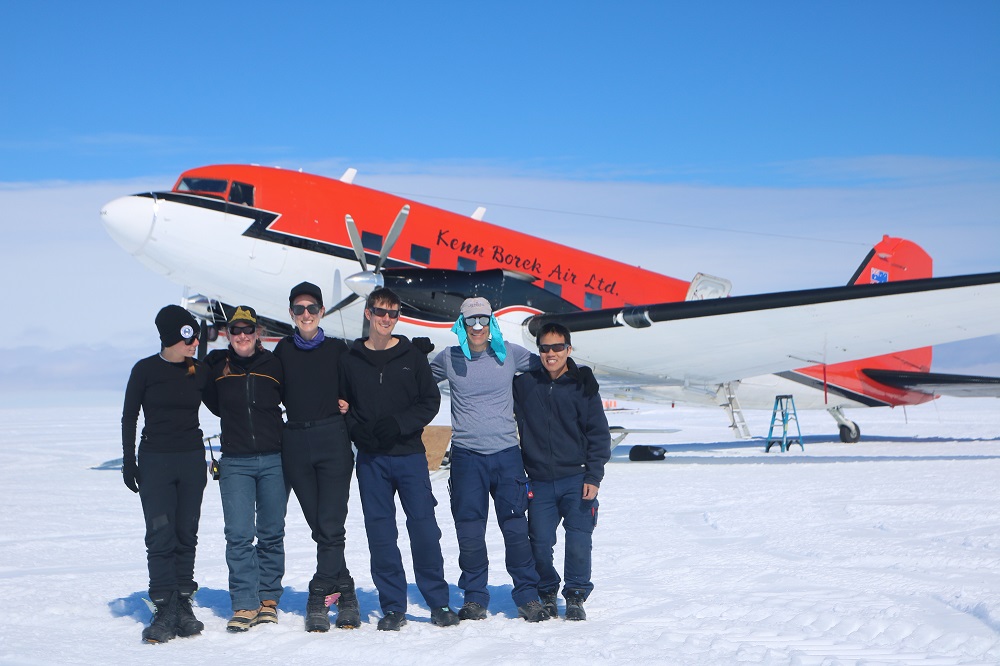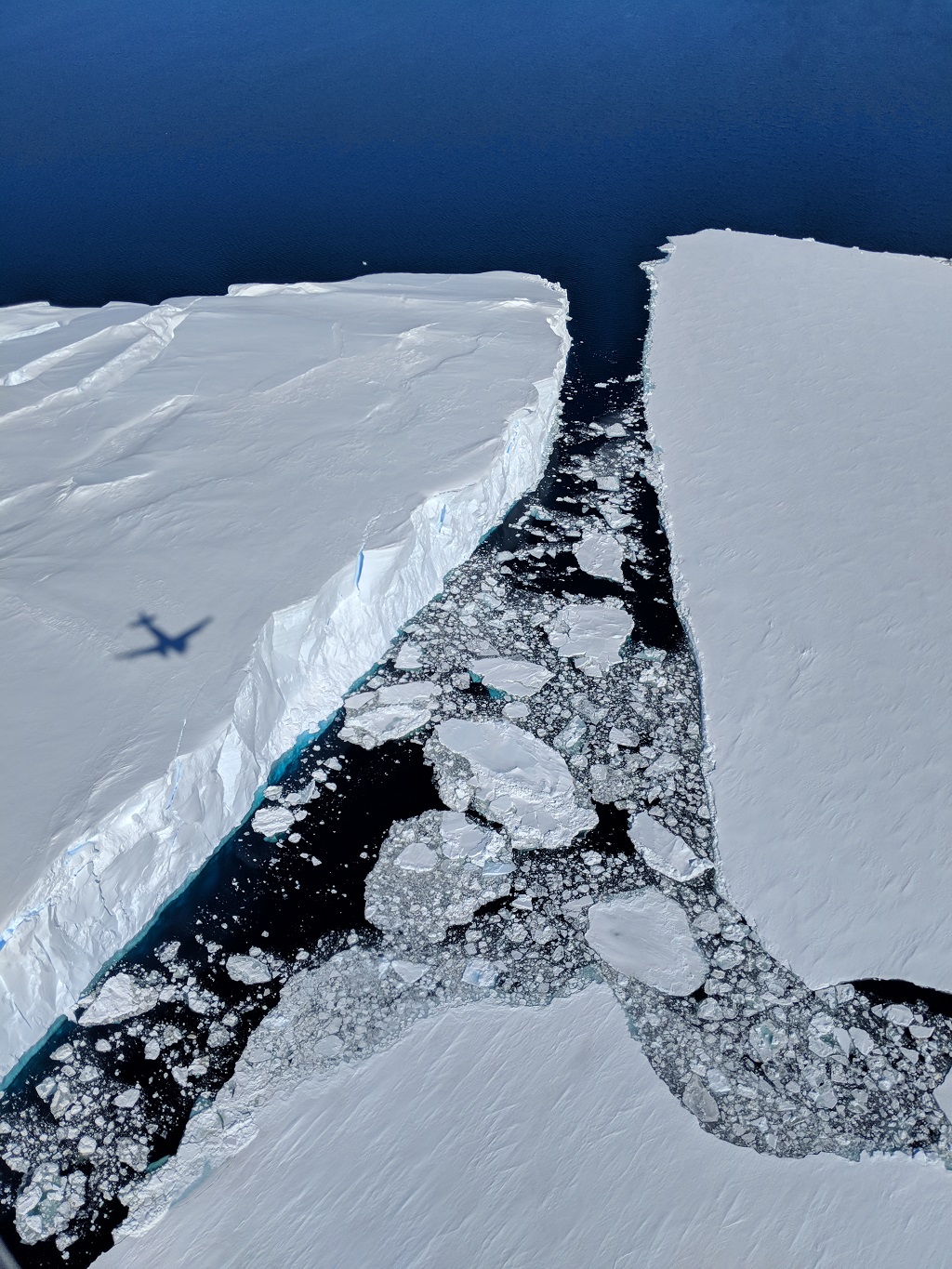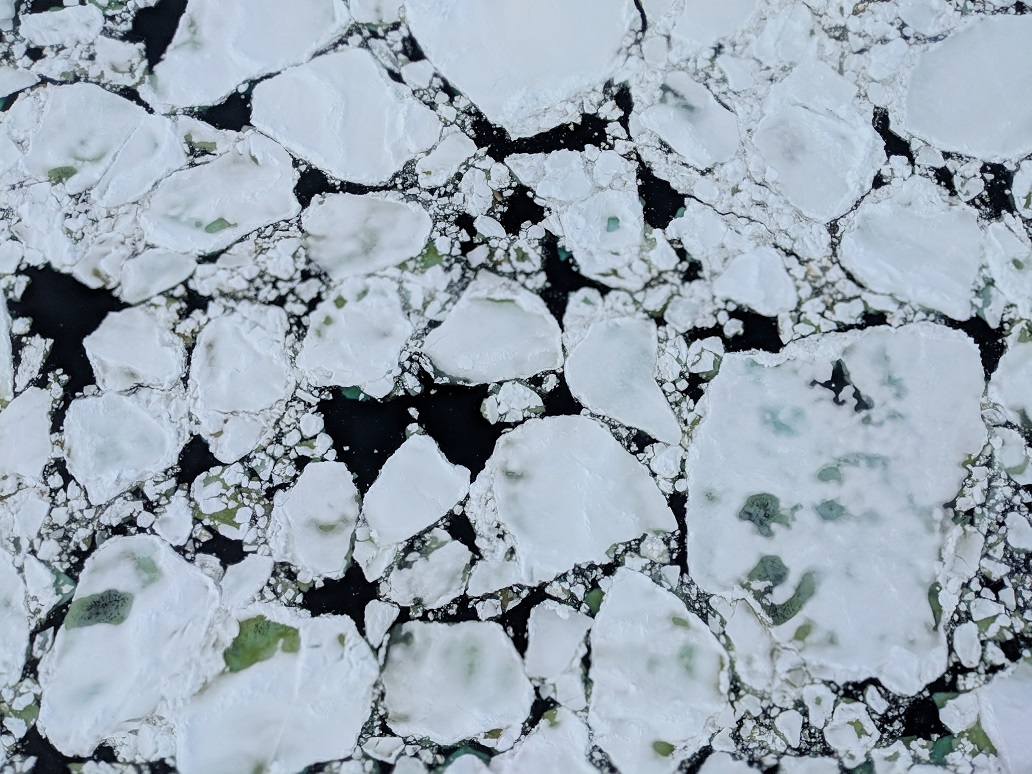

Three Hobart-based scientists - Dr Lenneke Jong, Dr Felicity Graham, and PhD student Wilma Huneke - formed the Australian team on the long-running ICECAP project (International Collaboration for Exploration of the Cryosphere through Aerogeophysical Profiling).
In collaboration with the University of Texas Institute for Geophysics (UTIG) and supported through the Australian Antarctic Program, ICECAP is an international consortium involving scientists from the USA, UK, France, and Australia, which began in the International Polar Year in 2008.
 Each year, ICECAP scientists fly over East Antarctica to gain a better understanding of how and why the ice sheet and shelves are evolving.
Each year, ICECAP scientists fly over East Antarctica to gain a better understanding of how and why the ice sheet and shelves are evolving.
For Dr Graham, it was the second summer in a row spent flying over the ice.
“We flew in a Basler, an upgraded 1940s DC-3, to survey the ice sheet and investigate how it’s changing, which might be partly because of warm ocean currents melting the ice sheet,” Dr Graham said.
“We use radar to measure the thickness of the ice over the grounded portion of the ice sheet, and look at things like where there are lakes or other forms of liquid water under the ice. Our radar also detects internal layers in the ice, which reflect year to year changes in accumulation.
“Our aircraft also carries a laser instrument, which tells us about the surface elevation of the ice sheet. It’s particularly interesting if we fly over the same region in successive years and can see a change over time in the surface elevation.
“In addition to work over the grounded ice, ICECAP has evolved to survey floating ice and even open water without any floating ice.
“Where there are open patches of water we deployed sensors in areas where research vessels like the Aurora Australis generally can’t reach due to sea ice.
“These instruments measure temperature and depth at one location and relay that information back to the plane by VHF radio. We circle above the sensor drop location for about ten minutes to receive the signal.
“We deployed a number of sensors, which will enable us to tell how ocean waters of different temperatures are getting under the ice shelf and whether they are causing melting.
“We know that if there’s ocean water melting the ice shelf that can then lead to an acceleration of the ice from upstream on the grounded portion of the ice sheet, and that’s really what contributes to sea level rise.”
Despite long hours in the air and missing a second successive Christmas at home, Dr Graham said spending summer in the Antarctic was a special experience.
“I love being in Antarctica, and I love the science.
“We were based at Casey research station, which, while we were there over the summer, hosted around 110 people.
“On a day to day basis we’re liaising with the Australian Antarctic Division’s operations coordinator for flight information, the Bureau of Meteorology staff for forecasts and observations on the weather, and with our aviation ground support officers who assist us with flight operations.
“As the Basler has skis we were based at the skiway, about 10 kilometres inland from Casey research station.
 “We’d get our flight briefing at about midday, head up to the skiway between 1 and 2pm, start flying at 4pm, and land at around 10pm.
“We’d get our flight briefing at about midday, head up to the skiway between 1 and 2pm, start flying at 4pm, and land at around 10pm.
“The scientists work for another hour or two to get our data downloaded onto media and then we’d go back to the station.
“Half of our team would be up overnight processing the data so we can make sure we don’t have any issues with our instruments, and we can see at a first pass what the quality of the data’s like, which will help us to prepare for the next day’s flying.”
Dr Graham said the data collected during another successful season would be invaluable in informing ongoing research into the impact of climate change in Antarctica, while the memories of summer on the ice would leave a lasting impact on all involved in ICECAP 2017–18.
“We are in a gorgeous location and get to watch the sunset at midnight as we’re coming back down the hill from a flight, which is just spectacular.
“It’s hard missing Christmas and being away from the family, but I wouldn’t trade it,” she said.
The field season was supported by the ACE CRC and the Australian Research Council Antarctic Gateway Partnership.
Image, below, the ICECAP 2018 team, l-r, Wilma Huneke, Dr Lenneke Jong, Dr Felicity Graham, Chad Greene (UTIG), Gonzo Echeverry (UTIG), Greg Ng (UTIG). Photo: Greg Ng
